Are you curious about how tourism can uplift local communities in Thai Binh, Vietnam? SIXT.VN explores the multifaceted advantages of tourism, focusing on economic growth, cultural preservation, and infrastructure development. Discover how your visit can contribute to the prosperity and sustainability of this beautiful region with authentic travel experiences, responsible tourism, and community development.
1. What Is Community-Based Tourism and Why Is It Important?
Community-based tourism (CBT) is a tourism approach where local residents have substantial control over and involvement in tourism development and management. It’s important because it ensures that tourism benefits directly reach the community, fostering economic growth, preserving local culture, and promoting environmental sustainability.
Community-based tourism allows local communities to showcase their unique cultural heritage, traditions, and natural landscapes. According to the Vietnam National Administration of Tourism, CBT initiatives help in creating employment opportunities, enhancing skills, and empowering local residents. By actively participating in tourism activities, communities can generate income, improve their quality of life, and maintain their cultural identity. This approach also encourages responsible tourism practices, ensuring that the environment and cultural resources are preserved for future generations. CBT is increasingly recognized as a key strategy for sustainable tourism development, aligning with global trends towards responsible and ethical travel.
2. How Does Tourism Contribute to Economic Growth in Thai Binh?
Tourism significantly boosts the local economy in Thai Binh by generating income, creating jobs, and stimulating business growth.
Tourism brings in money through various channels such as accommodation, dining, transportation, and souvenir sales. This income directly benefits local businesses, including hotels, restaurants, and handicraft shops. According to a report by the Thai Binh Department of Culture, Sports, and Tourism, tourism accounts for a significant portion of the province’s GDP, with a steady increase in revenue year after year. The influx of tourists also creates numerous job opportunities for locals, including roles in hospitality, tour guiding, and transportation services. Furthermore, tourism encourages the development of new businesses and services, such as homestays, eco-tours, and cultural experiences, which further diversify the local economy and enhance its resilience.
3. What Types of Jobs Does Tourism Create for Locals in Thai Binh?
Tourism in Thai Binh creates a variety of job opportunities for local residents, ranging from hospitality and transportation to cultural preservation and tour guiding.
- Hospitality: Jobs in hotels, guesthouses, and homestays, including receptionists, chefs, housekeeping staff, and managers.
- Transportation: Roles for taxi drivers, bus operators, and boat tour guides, facilitating tourist movement within the province.
- Food and Beverage: Employment in restaurants, cafes, and food stalls, serving both local and international cuisine.
- Tour Guiding: Opportunities for knowledgeable locals to lead tours, sharing insights about the region’s history, culture, and natural attractions.
- Handicrafts and Souvenirs: Jobs in local craft shops, creating and selling traditional products to tourists.
- Entertainment: Roles in cultural performances, traditional music shows, and other tourist-oriented entertainment activities.
- Eco-Tourism: Opportunities in organizing and guiding eco-tours, promoting sustainable tourism practices.
- Administrative Roles: Positions in tourism offices, managing and coordinating tourism activities within the province.
These diverse job opportunities not only provide income for local families but also contribute to skill development and the overall economic well-being of the community.
4. How Does Tourism Help Preserve Local Culture and Traditions in Thai Binh?
Tourism supports the preservation of Thai Binh’s local culture and traditions by providing a platform to showcase cultural heritage, encouraging the continuation of traditional practices, and generating revenue for cultural preservation efforts.
Tourism encourages local communities to maintain and celebrate their cultural heritage. Traditional festivals, music, dance, and crafts are often revived and promoted to attract tourists, ensuring that these cultural elements are passed down through generations. Revenue generated from tourism can be reinvested in preserving historical sites, museums, and cultural centers. According to UNESCO, tourism can play a vital role in safeguarding cultural heritage by raising awareness and appreciation among both locals and visitors. Furthermore, tourism fosters a sense of pride and identity within the community, motivating residents to protect and promote their unique cultural traditions.
5. What Are Some Examples of Cultural Experiences Tourists Can Enjoy in Thai Binh?
Tourists in Thai Binh can enjoy a variety of cultural experiences, including visiting historical sites, participating in local festivals, and exploring traditional craft villages.
- Historical Sites: Explore the Keo Pagoda, one of Vietnam’s oldest and most beautiful pagodas, showcasing traditional Vietnamese architecture and religious practices.
- Local Festivals: Participate in the Dong Xam Temple Festival, a vibrant celebration of local deities and traditional rituals, featuring music, dance, and religious ceremonies.
- Traditional Craft Villages: Visit the Dong Ho painting village, where artisans create unique woodblock prints using traditional techniques passed down through generations.
- Water Puppet Shows: Attend a traditional water puppet show, a unique Vietnamese art form that tells stories through puppetry performed on water.
- Local Cuisine: Savor authentic Thai Binh dishes such as banh gai (sticky rice cake) and seafood delicacies, experiencing the region’s culinary heritage.
- Homestays: Stay in a local homestay, immersing yourself in the daily life of Thai Binh residents and learning about their customs and traditions.
- Traditional Music Performances: Enjoy live performances of ca tru and other traditional Vietnamese music forms, experiencing the rich musical heritage of the region.
These cultural experiences offer tourists a deeper understanding of Thai Binh’s unique identity and contribute to the preservation of its cultural heritage.
6. How Does Tourism Promote Infrastructure Development in Thai Binh?
Tourism drives infrastructure development in Thai Binh by creating demand for better roads, transportation, accommodation, and public services, leading to increased investment and improvement in these areas.
The influx of tourists necessitates improved infrastructure to support their needs. This includes better roads to access tourist sites, upgraded transportation services, and the construction of new hotels and guesthouses. According to the Ministry of Transport, increased tourism activity often leads to government investment in infrastructure projects, such as airport upgrades, road expansions, and improved public transportation systems. Additionally, tourism can spur private investment in infrastructure, as businesses seek to capitalize on the growing demand for tourist services. These improvements not only benefit tourists but also enhance the quality of life for local residents, providing better access to essential services and facilities.
7. What Infrastructure Improvements Are Needed to Support Tourism in Thai Binh?
To further support tourism growth in Thai Binh, several infrastructure improvements are needed, including better transportation, accommodation facilities, and tourist information centers.
- Transportation: Improving road networks to connect tourist attractions, upgrading public transportation services, and developing airport facilities to increase accessibility.
- Accommodation: Building more hotels, guesthouses, and homestays to cater to the increasing number of tourists, ensuring a range of options for different budgets.
- Tourist Information Centers: Establishing well-equipped tourist information centers to provide visitors with maps, brochures, and local guidance.
- Public Services: Enhancing public services such as sanitation, waste management, and healthcare facilities to ensure a clean and healthy environment for tourists and residents.
- Digital Infrastructure: Improving internet connectivity and access to digital services to facilitate online bookings, information access, and communication for tourists.
- Recreational Facilities: Developing recreational facilities such as parks, beaches, and entertainment venues to enhance the tourist experience.
- Signage: Installing clear and informative signage in multiple languages to guide tourists to key attractions and services.
These infrastructure improvements will not only support the growth of tourism in Thai Binh but also contribute to the overall development and well-being of the region.
8. How Can Tourism Be Managed Sustainably in Thai Binh to Benefit Local Communities?
Sustainable tourism management in Thai Binh involves minimizing negative impacts, maximizing benefits for local communities, and ensuring the long-term preservation of cultural and natural resources.
- Community Involvement: Engaging local communities in tourism planning and decision-making processes, ensuring that their voices are heard and their interests are considered.
- Environmental Protection: Implementing measures to protect natural resources, reduce pollution, and conserve biodiversity, such as promoting eco-friendly practices and responsible waste management.
- Cultural Preservation: Supporting the preservation of local culture and traditions, encouraging cultural tourism that respects and celebrates local heritage.
- Economic Benefits: Ensuring that tourism revenue is distributed equitably within the community, supporting local businesses and creating job opportunities for residents.
- Education and Training: Providing education and training programs for local residents to enhance their skills and knowledge in tourism-related fields.
- Monitoring and Evaluation: Regularly monitoring and evaluating the impacts of tourism on the environment, economy, and community, making adjustments as needed to ensure sustainability.
- Responsible Tourism Practices: Promoting responsible tourism practices among tourists, encouraging them to respect local customs, minimize their environmental footprint, and support local businesses.
By implementing these sustainable tourism management practices, Thai Binh can maximize the benefits of tourism for local communities while preserving its cultural and natural heritage for future generations.
9. What Role Does SIXT.VN Play in Supporting Tourism in Thai Binh?
SIXT.VN plays a crucial role in supporting tourism in Thai Binh by providing convenient and reliable services that enhance the tourist experience, promote local businesses, and contribute to sustainable tourism practices.
- Transportation Services: Offering reliable transportation services, including airport transfers, car rentals, and private transportation, making it easier for tourists to explore Thai Binh and its attractions.
- Accommodation Booking: Providing a platform for booking hotels, guesthouses, and homestays in Thai Binh, supporting local accommodation providers and offering tourists a range of options to suit their needs.
- Tour and Activity Booking: Offering a variety of tours and activities that showcase the best of Thai Binh, promoting local attractions and cultural experiences.
- Information and Support: Providing tourists with information and support, including travel tips, local guidance, and assistance with bookings and arrangements.
- Promotion of Local Businesses: Partnering with local businesses to promote their products and services, supporting the local economy and providing tourists with authentic experiences.
- Sustainable Tourism Practices: Encouraging sustainable tourism practices, such as promoting eco-friendly accommodations and tours, and supporting community-based tourism initiatives.
- Customer Service: Offering excellent customer service, ensuring that tourists have a positive and memorable experience in Thai Binh.
By providing these services, SIXT.VN helps to enhance the overall tourism experience in Thai Binh, contributing to the growth and sustainability of the local tourism industry.
10. How Can Tourists Ensure They Are Benefiting Local Communities When Visiting Thai Binh?
Tourists can ensure they are benefiting local communities in Thai Binh by choosing local businesses, respecting local customs, and engaging in responsible tourism practices.
- Choose Local Businesses: Patronize local restaurants, shops, and accommodation providers, ensuring that your money stays within the community.
- Respect Local Customs: Dress modestly, ask permission before taking photos, and be mindful of local traditions and cultural norms.
- Engage in Community-Based Tourism: Participate in tours and activities that are organized and led by local residents, supporting community-based tourism initiatives.
- Purchase Local Products: Buy handicrafts, souvenirs, and other products made by local artisans, supporting traditional crafts and providing income for local families.
- Minimize Environmental Impact: Reduce your environmental footprint by using public transportation, avoiding single-use plastics, and respecting natural resources.
- Learn About Local Culture: Take the time to learn about the history, culture, and traditions of Thai Binh, showing respect and appreciation for the local way of life.
- Leave a Positive Impact: Treat local residents with kindness and respect, and leave a positive impression on the community.
By following these guidelines, tourists can ensure that their visit to Thai Binh benefits local communities and contributes to the sustainable development of the region.
11. What Are Some Emerging Trends in Community-Based Tourism in Vietnam?
Emerging trends in community-based tourism in Vietnam include a greater focus on sustainability, digital integration, and personalized experiences.
- Sustainability: A growing emphasis on eco-friendly practices, conservation, and responsible tourism to minimize environmental impact and preserve natural resources.
- Digital Integration: Increased use of technology for online bookings, marketing, and communication, enhancing accessibility and convenience for tourists.
- Personalized Experiences: A shift towards customized tours and activities that cater to individual interests and preferences, providing unique and memorable experiences.
- Cultural Immersion: Greater emphasis on cultural immersion, with tourists seeking authentic experiences that allow them to interact with local communities and learn about their traditions.
- Health and Wellness: Growing interest in health and wellness tourism, with offerings such as yoga retreats, spa treatments, and traditional medicine experiences in community settings.
- Adventure Tourism: Rising popularity of adventure tourism activities such as trekking, cycling, and water sports, providing opportunities for active exploration of local landscapes.
- Agritourism: Increased interest in agricultural tourism, with tourists visiting farms, participating in agricultural activities, and learning about local farming practices.
These emerging trends reflect a growing demand for sustainable, authentic, and personalized travel experiences, creating new opportunities for community-based tourism in Vietnam.
12. How Can Local Authorities Support the Growth of Community-Based Tourism?
Local authorities can play a vital role in supporting the growth of community-based tourism by providing funding, training, and infrastructure development.
- Funding: Allocating financial resources to support community-based tourism initiatives, including grants, loans, and subsidies for local businesses and organizations.
- Training: Providing training programs for local residents to enhance their skills and knowledge in tourism-related fields, such as hospitality, tour guiding, and marketing.
- Infrastructure Development: Investing in infrastructure improvements, such as roads, transportation, and public services, to support the growth of tourism in local communities.
- Policy and Regulation: Developing policies and regulations that promote sustainable tourism practices and protect the interests of local communities.
- Marketing and Promotion: Promoting community-based tourism destinations and experiences through marketing campaigns, websites, and social media.
- Partnerships: Fostering partnerships between local communities, tourism businesses, and government agencies to promote collaboration and cooperation.
- Monitoring and Evaluation: Regularly monitoring and evaluating the impacts of tourism on local communities, making adjustments as needed to ensure sustainability.
By implementing these measures, local authorities can create an enabling environment for the growth of community-based tourism, benefiting both local communities and the tourism industry as a whole.
13. What Are the Challenges of Developing Community-Based Tourism?
Developing community-based tourism can be challenging due to issues such as limited resources, lack of expertise, and potential conflicts within the community.
- Limited Resources: Many local communities lack the financial resources, infrastructure, and expertise needed to develop and manage tourism effectively.
- Lack of Expertise: Local residents may not have the skills and knowledge required to run a tourism business, manage finances, or market their products and services.
- Community Conflicts: Differences in opinion and conflicts of interest within the community can hinder the development of tourism initiatives.
- Environmental Impact: Tourism can have negative impacts on the environment, such as pollution, habitat destruction, and depletion of natural resources.
- Cultural Preservation: The influx of tourists can threaten local culture and traditions, leading to cultural commodification and loss of authenticity.
- Market Access: Local communities may struggle to access markets and attract tourists due to limited marketing resources and competition from established tourism businesses.
- Sustainability: Ensuring the long-term sustainability of tourism initiatives can be challenging, requiring careful planning and management to balance economic, social, and environmental considerations.
Addressing these challenges requires a collaborative effort involving local communities, government agencies, tourism businesses, and non-profit organizations, working together to develop sustainable and responsible tourism practices.
14. How Does Community-Based Tourism Compare to Mass Tourism?
Community-based tourism differs from mass tourism in its focus on local involvement, sustainability, and cultural preservation, while mass tourism often prioritizes profit and volume.
| Feature | Community-Based Tourism | Mass Tourism |
|---|---|---|
| Focus | Local involvement, sustainability, cultural preservation | Profit maximization, high volume |
| Control | Local communities have substantial control | Large corporations or external entities control most aspects |
| Impact | Positive impact on local economy, culture, and environment | Potential negative impacts on local resources and culture |
| Sustainability | Emphasizes long-term sustainability | Often disregards long-term sustainability |
| Cultural Exchange | Promotes authentic cultural exchange and understanding | Can lead to cultural commodification and loss of authenticity |
| Economic Benefits | Benefits are distributed more equitably within the community | Profits often flow out of the local community |
| Environmental Impact | Aims to minimize environmental impact through responsible practices | Can contribute to pollution, habitat destruction, and resource depletion |
Community-based tourism offers a more sustainable and equitable approach to tourism development, benefiting local communities while preserving their cultural and natural heritage.
15. How Can SIXT.VN Help Tourists Plan a Sustainable Trip to Thai Binh?
SIXT.VN can help tourists plan a sustainable trip to Thai Binh by providing information on eco-friendly accommodations, promoting local businesses, and offering responsible tour options.
- Eco-Friendly Accommodations: Providing a list of eco-friendly hotels, guesthouses, and homestays in Thai Binh that prioritize sustainability and responsible practices.
- Local Businesses: Promoting local restaurants, shops, and tour operators that are committed to supporting the local economy and preserving cultural traditions.
- Responsible Tour Options: Offering a variety of tours and activities that are designed to minimize environmental impact and maximize benefits for local communities.
- Transportation Services: Providing transportation options that are environmentally friendly, such as bicycle rentals and public transportation.
- Travel Tips: Offering travel tips and guidelines on how to travel responsibly in Thai Binh, including information on local customs, environmental protection, and community support.
- Sustainable Tourism Initiatives: Supporting sustainable tourism initiatives in Thai Binh, such as community-based tourism projects and conservation efforts.
- Customer Support: Providing customer support to help tourists plan and book their sustainable trip to Thai Binh, answering questions and providing recommendations.
By utilizing SIXT.VN, tourists can easily plan a sustainable trip to Thai Binh that benefits local communities and preserves the region’s cultural and natural heritage.
16. What Are the Key Performance Indicators (KPIs) for Measuring the Success of Community-Based Tourism?
Key Performance Indicators (KPIs) for measuring the success of community-based tourism include economic benefits, social impacts, environmental sustainability, and tourist satisfaction.
- Economic Benefits:
- Increase in local income and employment rates
- Growth in local business revenue
- Diversification of the local economy
- Social Impacts:
- Improved quality of life for local residents
- Preservation of local culture and traditions
- Increased community empowerment and participation
- Environmental Sustainability:
- Reduced environmental impact from tourism activities
- Conservation of natural resources and biodiversity
- Improved waste management and pollution control
- Tourist Satisfaction:
- High levels of tourist satisfaction and positive reviews
- Increased repeat visits and recommendations
- Positive feedback on cultural experiences and community interactions
By tracking these KPIs, stakeholders can assess the effectiveness of community-based tourism initiatives and make adjustments as needed to maximize their positive impacts.
17. How Can Technology Enhance Community-Based Tourism?
Technology can greatly enhance community-based tourism by improving communication, marketing, and operational efficiency, ultimately boosting the tourist experience and local benefits.
- Online Booking Platforms: Allow tourists to easily book accommodations, tours, and activities directly from local providers, increasing their visibility and revenue.
- Mobile Apps: Provide tourists with access to information on local attractions, cultural events, and community-based tourism initiatives, enhancing their travel experience.
- Social Media: Enable local communities to promote their destinations and experiences to a wider audience, attracting more tourists and generating income.
- Digital Payment Systems: Facilitate secure and convenient transactions for tourists and local businesses, reducing reliance on cash and improving financial transparency.
- Online Training and Education: Provide local residents with access to online training and education programs in tourism-related fields, enhancing their skills and knowledge.
- Data Analytics: Enable local communities to track and analyze tourism trends, visitor feedback, and economic impacts, informing decision-making and improving management practices.
- Virtual Tours: Offer virtual tours of local attractions and cultural sites, allowing tourists to explore destinations remotely and plan their trips more effectively.
By leveraging these technologies, community-based tourism initiatives can improve their competitiveness, reach a wider audience, and provide a more seamless and enriching experience for tourists.
18. What Are the Best Practices for Marketing Community-Based Tourism?
Best practices for marketing community-based tourism involve highlighting unique cultural experiences, emphasizing sustainability, and building strong relationships with travel agencies and tourists.
- Highlight Unique Cultural Experiences: Showcase the unique cultural traditions, local customs, and authentic experiences that distinguish community-based tourism destinations from mainstream tourism offerings.
- Emphasize Sustainability: Promote the environmental and social benefits of community-based tourism, emphasizing its role in preserving local culture and protecting natural resources.
- Build Strong Relationships: Establish strong relationships with travel agencies, tour operators, and media outlets to promote community-based tourism destinations and experiences to a wider audience.
- Use Digital Marketing: Utilize digital marketing channels such as social media, websites, and online travel platforms to reach potential tourists and promote community-based tourism offerings.
- Create Compelling Content: Develop compelling content such as photos, videos, and stories that showcase the beauty, culture, and authenticity of community-based tourism destinations.
- Offer Competitive Pricing: Provide competitive pricing that reflects the value of the experiences offered while ensuring fair compensation for local communities.
- Encourage Word-of-Mouth Marketing: Encourage satisfied tourists to share their experiences with others through word-of-mouth marketing, reviews, and social media posts.
By implementing these best practices, community-based tourism initiatives can effectively market their destinations and experiences, attract more tourists, and generate sustainable economic benefits for local communities.
19. How Can SIXT.VN Ensure Responsible Tourism Practices in Thai Binh?
SIXT.VN is committed to ensuring responsible tourism practices in Thai Binh by promoting eco-friendly options, supporting local businesses, and educating tourists on responsible travel.
- Eco-Friendly Options: We highlight and prioritize eco-friendly accommodations, transportation, and tour operators that adhere to sustainable practices.
- Support Local Businesses: We actively promote local restaurants, shops, and service providers that contribute to the local economy and cultural preservation.
- Educate Tourists: We provide travelers with essential guidelines and information on responsible travel, including respecting local customs, minimizing environmental impact, and supporting community initiatives.
- Community Engagement: We partner with local communities to develop and promote tourism products that benefit residents and preserve their way of life.
- Monitoring and Evaluation: We continuously monitor and evaluate the impact of our tourism activities to ensure they align with sustainable development goals.
- Certification: We seek certification from reputable organizations to validate our commitment to responsible tourism practices.
- Transparency: We operate with transparency, providing clear information on our sustainability initiatives and encouraging feedback from tourists and local communities.
By incorporating these practices into our operations, SIXT.VN strives to foster a positive and sustainable tourism ecosystem in Thai Binh, benefiting both visitors and local communities alike.
20. What Resources Are Available for Local Communities to Develop Tourism?
Several resources are available for local communities to develop tourism, including government programs, non-profit organizations, and international development agencies.
- Government Programs:
- Vietnam National Administration of Tourism (VNAT) provides funding, training, and technical assistance for tourism development.
- Local tourism departments offer support for community-based tourism initiatives and infrastructure improvements.
- Non-Profit Organizations:
- SNV Netherlands Development Organisation supports sustainable tourism projects and community empowerment.
- The Asia Foundation provides grants and technical assistance for community-based tourism development.
- International Development Agencies:
- The World Bank offers funding and technical assistance for tourism infrastructure and sustainable development.
- The United Nations Development Programme (UNDP) supports community-based tourism projects and environmental conservation.
- Online Resources:
- Websites such as TripAdvisor and Booking.com provide marketing and booking platforms for local accommodations and tour operators.
- Tourism-related blogs and forums offer information and best practices for community-based tourism development.
- Training Programs:
- Hospitality and tourism schools offer training programs for local residents in tourism-related fields.
- Vocational training centers provide skills development programs in areas such as tour guiding, cooking, and handicraft production.
- Mentorship Programs:
- Experienced tourism professionals and entrepreneurs offer mentorship and guidance to local communities in developing their tourism businesses.
By leveraging these resources, local communities can gain the knowledge, skills, and financial support needed to develop sustainable and successful tourism initiatives.
SIXT.VN: Your Gateway to Authentic Thai Binh Experiences
Ready to explore the cultural richness and natural beauty of Thai Binh while supporting local communities? SIXT.VN offers expertly curated tours, comfortable accommodations, and reliable transportation services to ensure a seamless and responsible travel experience. Contact us today to start planning your unforgettable journey and contribute to the sustainable growth of Thai Binh. Visit SIXT.VN or call our hotline/Whatsapp at +84 986 244 358. Address: 260 Cau Giay, Hanoi, Vietnam. Let SIXT.VN be your trusted partner in discovering the heart of Vietnam.
Embark on an adventure with SIXT Vietnam today; experience authentic culture, support local communities and create unforgettable travel memories. Consider eco-friendly accommodations and local tour options when traveling to Thai Binh.
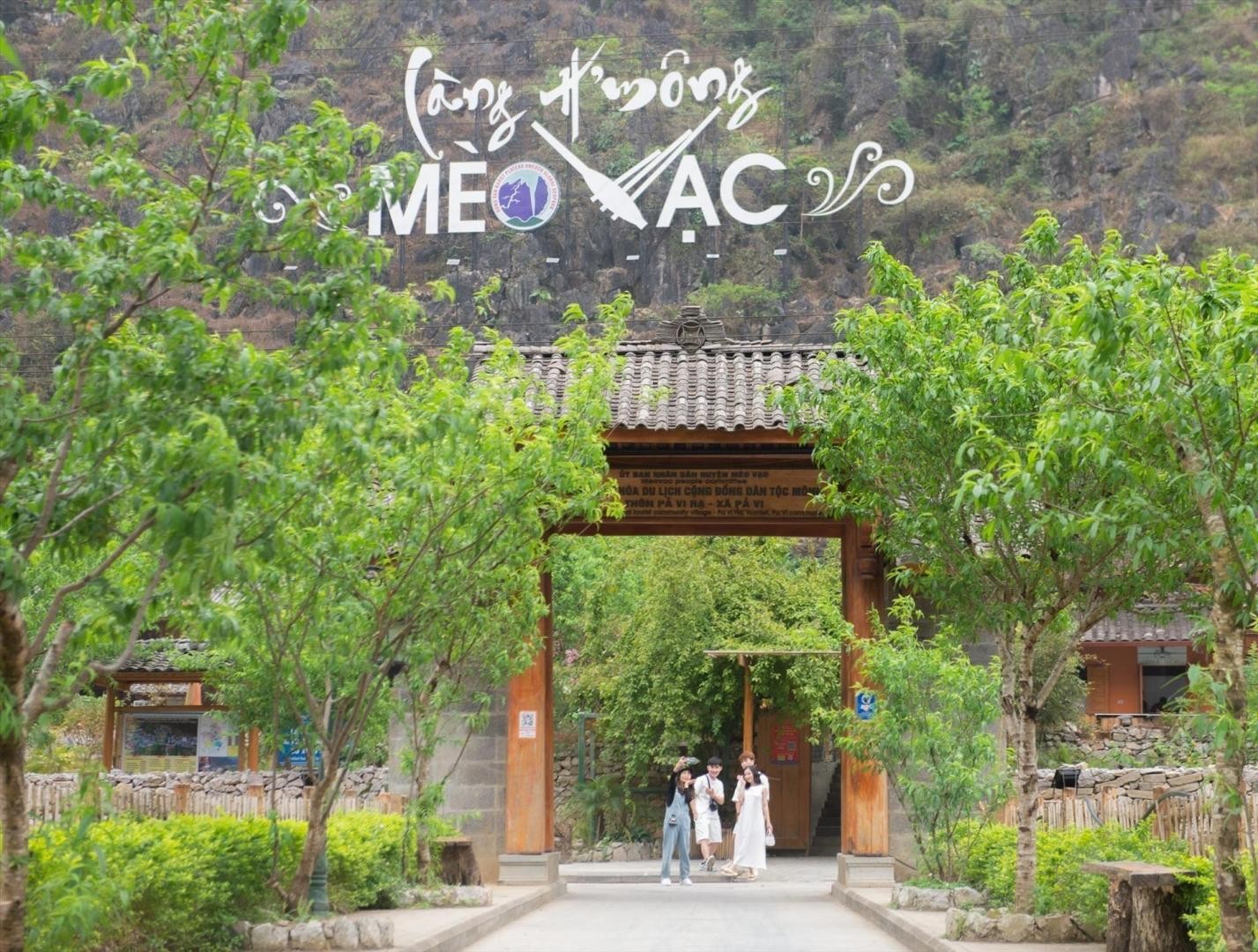 Community-based tourism brings economic benefits to local communities
Community-based tourism brings economic benefits to local communities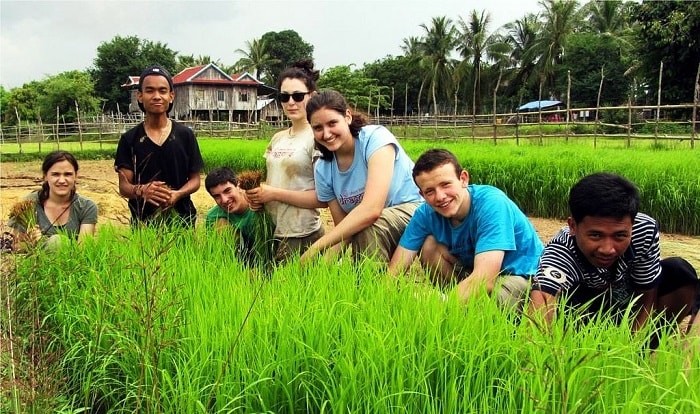 Community tourism development needs to go hand in hand with education
Community tourism development needs to go hand in hand with education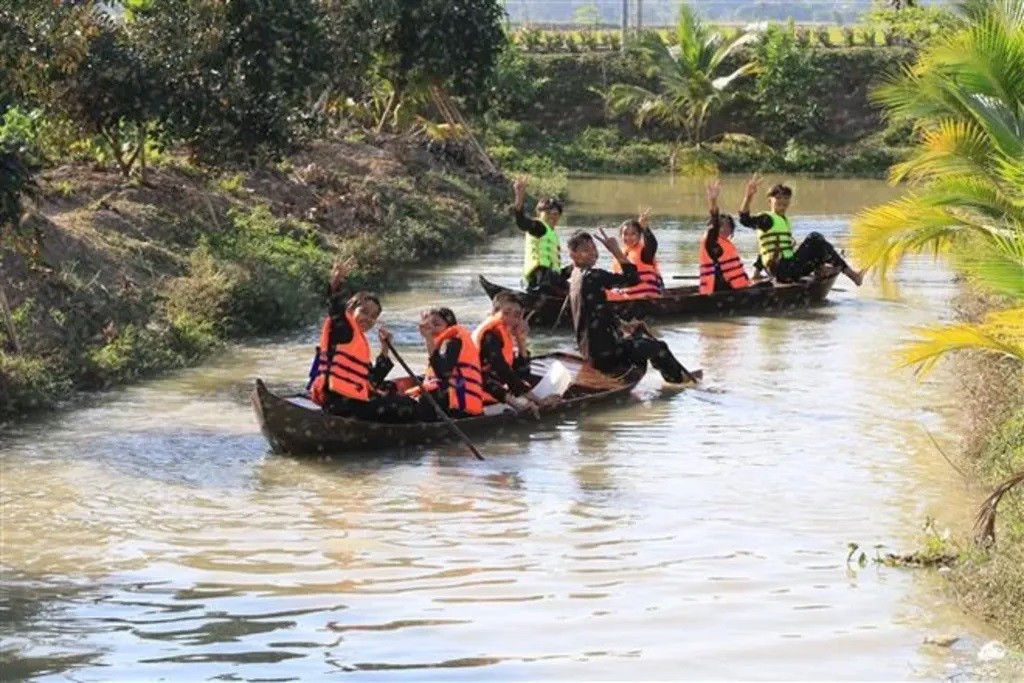 Tourists experience river tourism in Can Tho
Tourists experience river tourism in Can Tho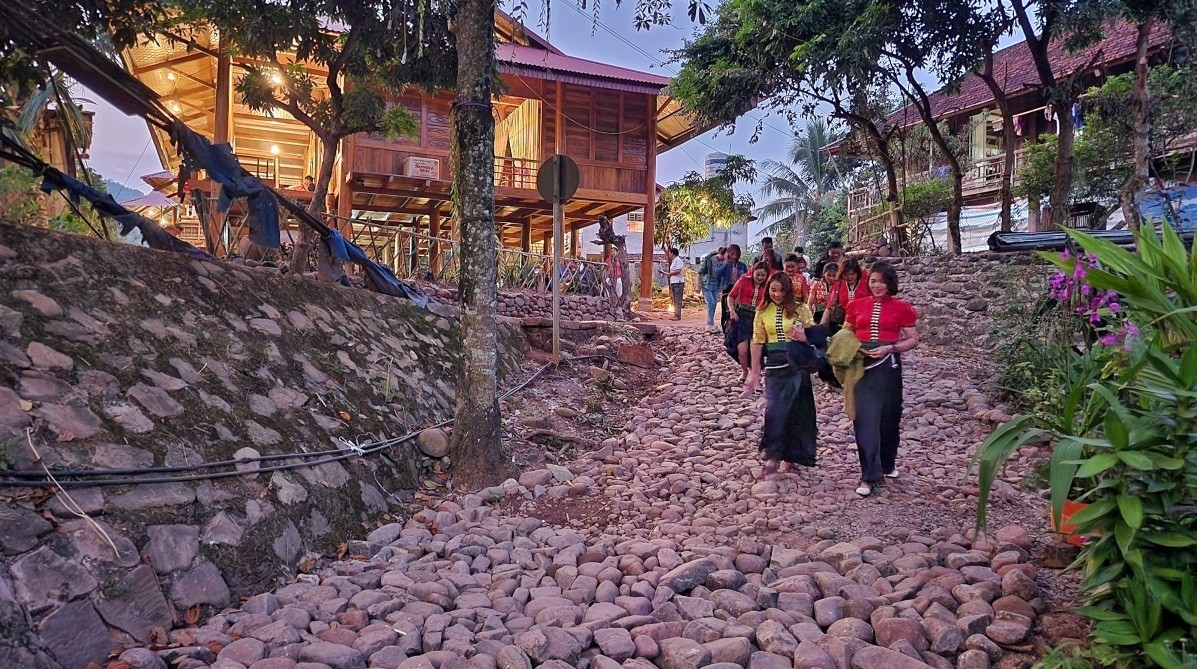 Na Su village, Cha Nua commune, Nam Po, Dien Bien province
Na Su village, Cha Nua commune, Nam Po, Dien Bien province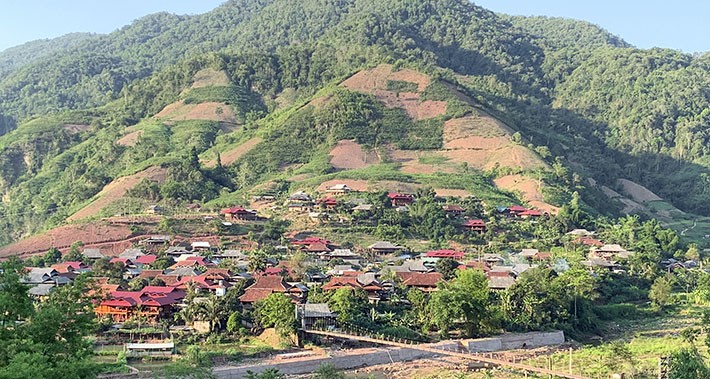 Na Su village, Cha Nua commune, Nam Po, Dien Bien province
Na Su village, Cha Nua commune, Nam Po, Dien Bien province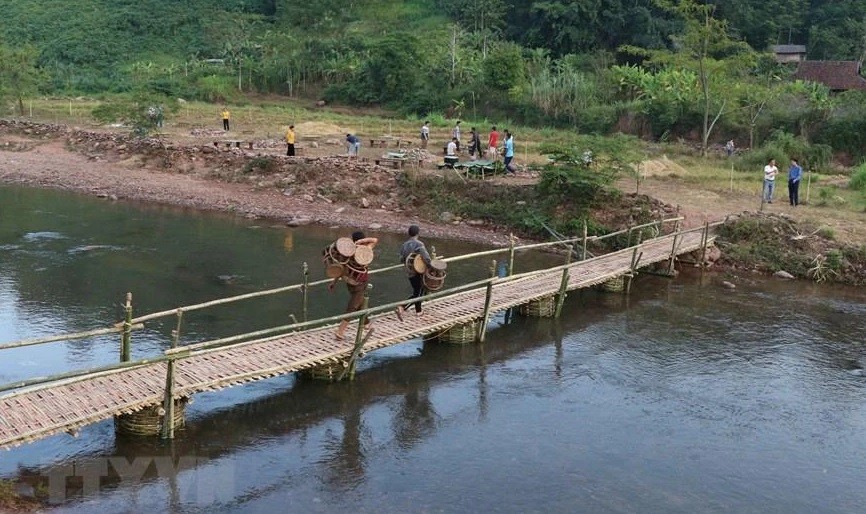 Na Su village, Cha Nua commune, Nam Po, Dien Bien province
Na Su village, Cha Nua commune, Nam Po, Dien Bien province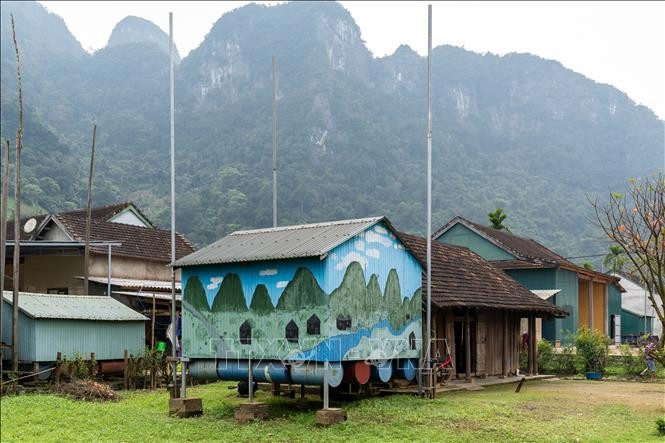 Tan Hoa village in Minh Hoa district, Quang Binh province
Tan Hoa village in Minh Hoa district, Quang Binh province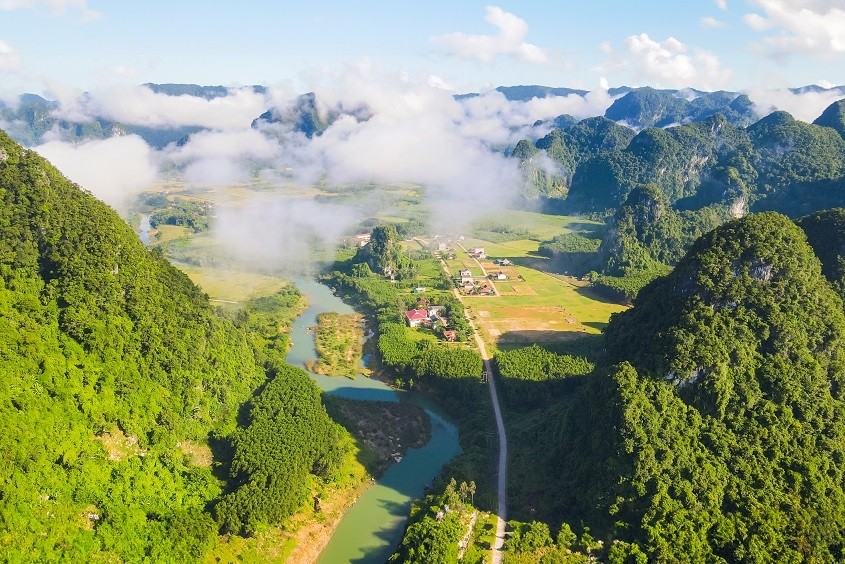 Tan Hoa village in Minh Hoa district, Quang Binh province
Tan Hoa village in Minh Hoa district, Quang Binh province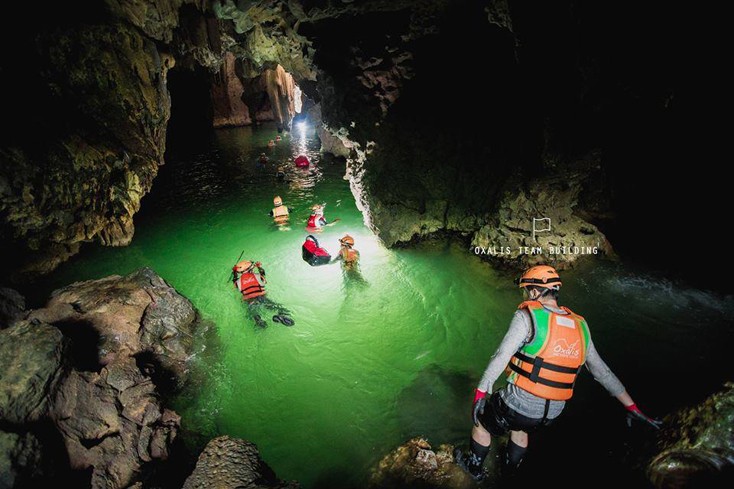 Tourists discover Tu Lan cave
Tourists discover Tu Lan cave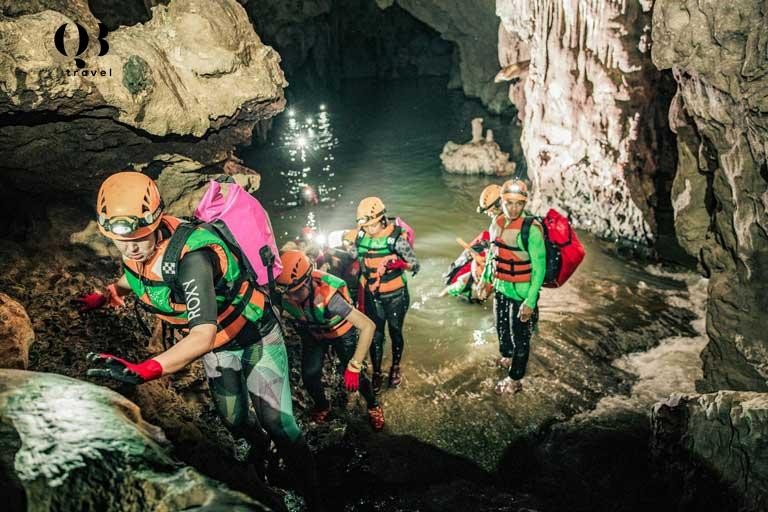 Tourists discover Tu Lan cave
Tourists discover Tu Lan cave Tourists discover Tu Lan cave
Tourists discover Tu Lan cave Foreign tourists experience brocade weaving craft of the Thai ethnic group
Foreign tourists experience brocade weaving craft of the Thai ethnic group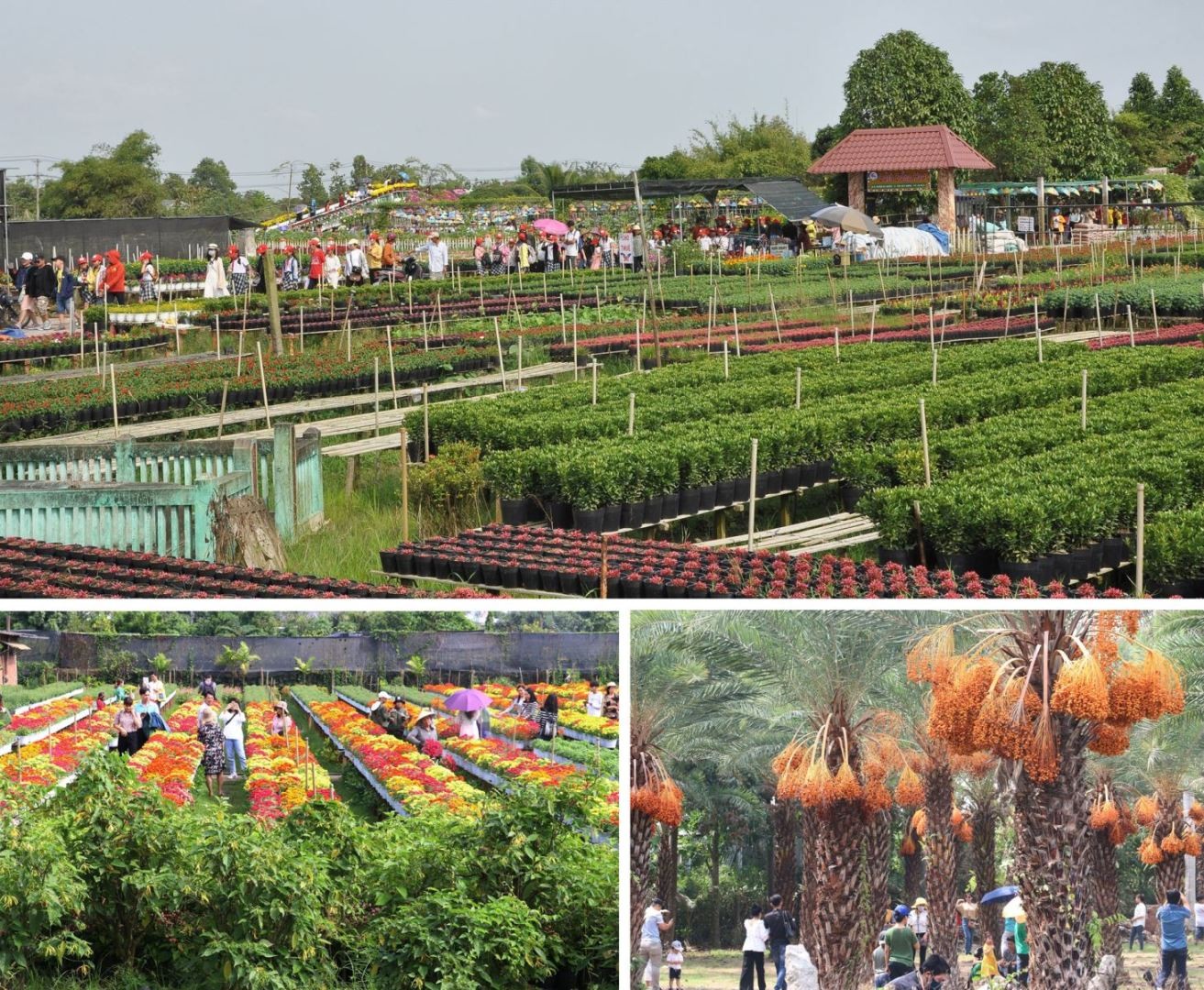 Sa Dec produces flowers in association with tourism development
Sa Dec produces flowers in association with tourism development
FAQ Section
Q1: What is the definition of community-based tourism (CBT)?
CBT is a tourism approach where local residents have substantial control over and involvement in tourism development and management, ensuring that the benefits directly reach the community.
Q2: How does tourism impact the economic growth of Thai Binh?
Tourism boosts Thai Binh’s local economy by generating income through accommodation, dining, transportation, and souvenir sales, creating jobs and stimulating business growth.
Q3: What cultural experiences can tourists enjoy in Thai Binh?
Tourists can visit historical sites such as Keo Pagoda, participate in local festivals like the Dong Xam Temple Festival, and explore traditional craft villages such as Dong Ho painting village.
Q4: How does tourism contribute to infrastructure development in Thai Binh?
Tourism drives the need for better roads, transportation, accommodation, and public services, leading to increased investment and infrastructure improvements.
Q5: What can tourists do to ensure they support local communities in Thai Binh?
Tourists can choose local businesses, respect local customs, engage in community-based tourism, and purchase local products to ensure they benefit the communities they visit.
Q6: What role does SIXT.VN play in supporting tourism in Thai Binh?
SIXT.VN supports tourism by providing transportation, accommodation booking, tour options, and information, enhancing the tourist experience and promoting local businesses.
Q7: What are the challenges in developing community-based tourism?
Challenges include limited resources, lack of expertise, potential community conflicts, and the need to mitigate environmental impacts and preserve cultural integrity.
Q8: How can local authorities support the growth of community-based tourism?
Local authorities can provide funding, training, infrastructure development, and supportive policies to foster the growth of sustainable community-based tourism.
Q9: What are emerging trends in community-based tourism in Vietnam?
Emerging trends include a focus on sustainability, digital integration, personalized experiences, cultural immersion, health and wellness tourism, adventure tourism, and agritourism.
Q10: How can technology enhance community-based tourism?
Technology can enhance CBT through online booking platforms, mobile apps, social media, digital payment systems, online training, data analytics, and virtual tours.



